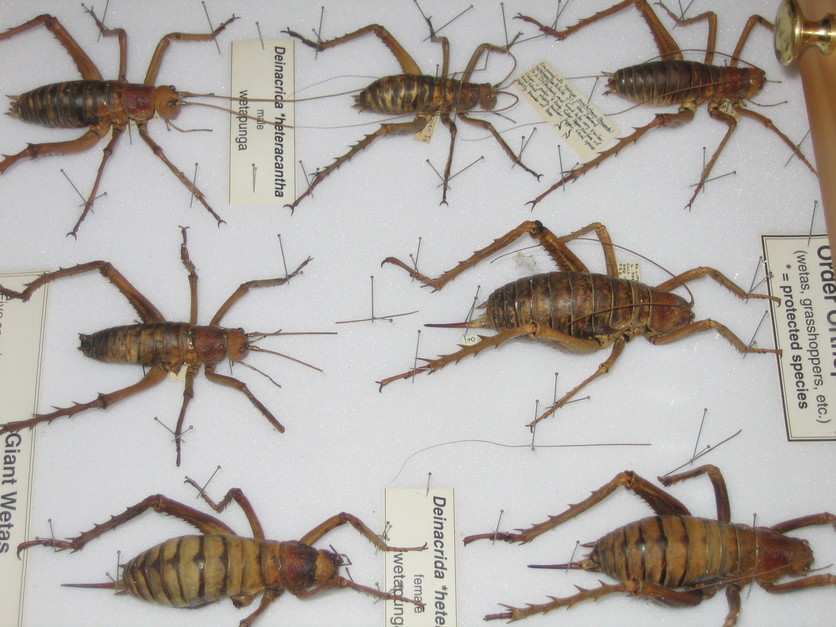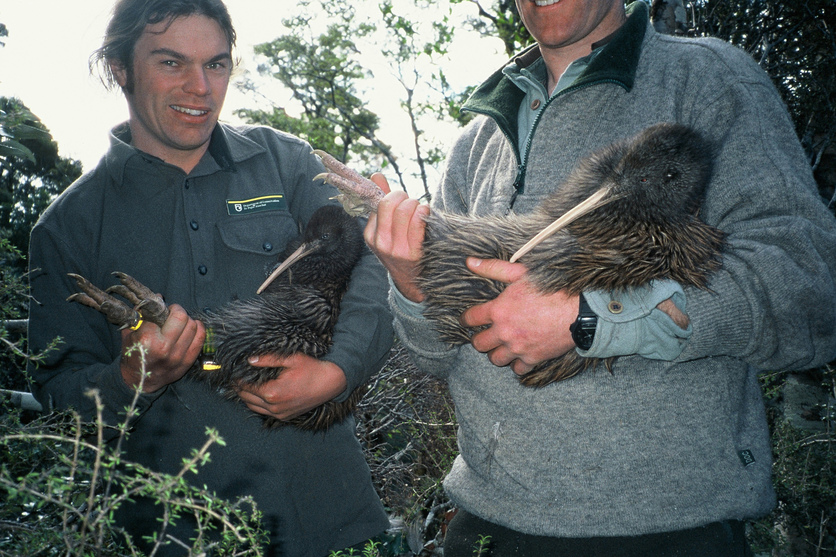This article curates Hub resources regarding some of New Zealand's unique native insects and fungi – and the ecosystems that support them. Find out how our hidden taonga are conserved.
The islands that make up this country are home to a vast number of species found nowhere else in the world. Our resources explore some of the unique species endemic to New Zealand.
We look at the huge collection of insects housed at Manaaki Whenua – Landcare Research in Auckland. This fascinating resource contains over 6 million specimens, both native and introduced. It acts as an enormous library for scientists, allowing them to study the range of insects that are found in New Zealand – and the collection keeps growing, with the discovery of around 100 new insect species in this country every year. It is the job of the scientists at Manaaki Whenua – Landcare Research to find out how special these insects are. Meet two of them – Dr Peter Buchanan and Rosa Henderson.
We meet some of the more fascinating insects that live in New Zealand. Did you know that there are mummies in the New Zealand bush and that Māori used to burn them to make the ink for moko? The mummies are mummified caterpillars, dried and preserved by one of our native fungi species.
Nature of science
Collections are important to scientists. Just like paintings and sculptures are collected and displayed in an art gallery, kept safe for people to treasure and learn from, the collection at Manaaki Whenua – Landcare Research provides examples of New Zealand’s rich flora and fauna.
Check out our delicate scale insects. With no legs and no wings, they live in the bark of trees. The only part you will ever see is the small anal tube poking out of the bark and dripping with sweet honeydew.
We also meet Fred the Thread – the world’s thinnest caterpillar. A native of the Waikato peat bogs, scientists had to go on quite a detective hunt to figure out what sort of species Fred actually is.
We also looks at conservation. We explore why New Zealand came to have such unique ecosystems, dominated by birds. With so many interesting and wonderful native and introduced species, we need to understand the parts they play in our ecosystems and, in particular, how some of the introduced species can cause harm to our native flora and fauna. New Zealand has one of the highest levels of biodiversity seen anywhere on Earth, but many of our native species are disappearing – what can we do to protect our treasures? The work that scientists do in finding, classifying and recording native and introduced species is a critical part of this. Find out more on naming species and classification systems used.
We also look at some of the more difficult concepts in conservation – should we conserve something that causes disease, like some of our native fungi do?
Our resources cover topics in biology and geology and the cultural importance of our native fauna. We learn about classification – how do scientists name species? We focus on some of the species that can only be found in New Zealand and find out how scientists work to conserve them. We also look back in time to the formation of New Zealand and how ancient species such as the tuatara come to be here.
Our land is unique – please explore it with us to find our hidden taonga.
Take up the challenge
Our resources include student activities suitable for primary and junior secondary students. The following activities have great links with literacy so you can combine science with reading, writing and viewing:
- Insect mihi – write a formal introduction for an insect species including its relationship to other animals and the land.
- Rearing insects – watch a video on the topic and write a 'how to' guide.
- Make a wanted poster – enhance observation and scientific drawing skills.
- Identifying bugs – with Manaaki Whenua – Landcare Research's easy-to-use web pages.
These activities provide interesting hands-on experiences:
- Moth collecting – plan your own expedition.
- Constructing food webs – use string and image cards to make a honeydew ecosystem.
- Growing fungi on bread – design and carry out bespoke investigations.
The Connected article Life in Aotearoa New Zealand looks at what made our wildlife so unique and introduces the science concepts evolution and adaptation.
Question bank
The New Zealand’s unique ecosystems – question bank provides an initial list of questions on our hidden taonga, New Zealand’s unique ecosystems, and places where their answers can be found. The questions support an inquiry approach.
Key terms
For explanations of key concepts, see New Zealand’s unique ecosystems – key terms.
Timeline
Explore the timeline to see key dates relating to some of the historical changes in New Zealand’s unique ecosystems.
Related content
The Hub has much more insect content to offer!
Explore:



